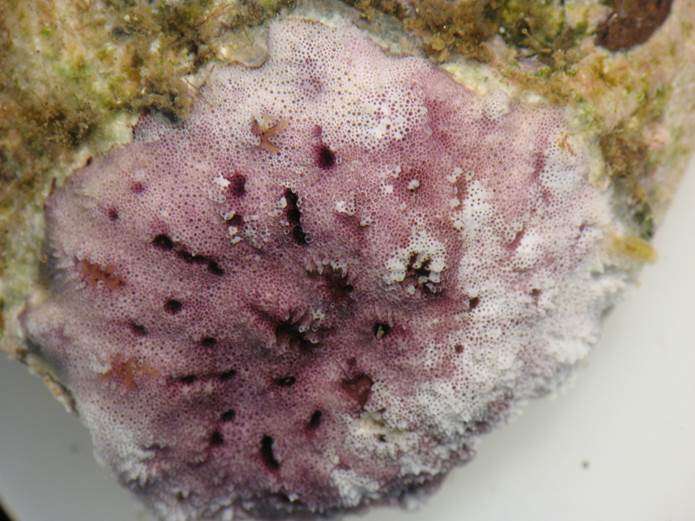New colonial marine organisms discovered in Madeira

The Portuguese island of Madeira is considered a diversity hotspot for bryozoans, which are colonial, principally marine, organisms. However, the fauna of these small animals only started being documented a short while ago. A team of Spanish and Portuguese scientists have now discovered two new species of bryozoans, as well as another that had previously only been found in the waters of Rio de Janeiro (Brazil).
To date, some 140 species of bryozoans have been identified in Madeira, which is why some authors consider the island to be a diversity hotspot for the zoological group. However, most of the knowledge they have of the region's animals is from studies carried out by English researchers at the end of the 19th and beginning of the 20th centuries.
Over the last few years, the application of more modern study techniques, together with electron microscopy, has enabled the diversity of these organisms to be analysed in greater detail, meaning greater distinctions between species can be made. This technology, in the majority of cases, allows researchers to compare the material collected now with what was gathered previously.
Thanks to these new methods, scientists from various Spanish and Portuguese centres have analysed samples of rocks colonised by the organisms at a depth of 11 metres, which were collected from the south of the island in August 2013. The results, published in the journal Zootaxa, reveal the discovery of two new species: Favosipora purpurea and Rhynchozoon papuliferum.
"This study not only describes two species of bryozoans which are new to science, but six documented species from the island of Madeira and a species considered endemic to Brazil which was found outside those waters for the first time are also described again," Javier Souto, a researcher affiliated with the University of Vienna and the department of Zoology and Biological Anthropology of the University of Santiago de Compostela (USC), told SINC.
In order to draw these conclusions, the team studied material gathered by the researchers themselves and samples collected at the end of the 19th century held in the Manchester Museum (UK). "In doing this we were able to confirm that all this material corresponded to a species that had never been discovered before, which we named Rhynchozoon papuliferum," said Souto.
According to the biologist, the name is related to the papilla-esque morphology of avicularians (zooids that are specialists in defence), "a fact that British scientist A. W. Waters (who gives his name to the collection of bryozoans in the English museum) had noticed as early as 1909, but the characteristic did not lead him to discover a new species," explained the Spanish researcher.
However, Favosipora purpurea, which takes its name from the colour of its colonies, is the first species belonging to this genus to be observed in the Atlantic Ocean, and it had previously only been known to inhabit the Pacific and Indian Oceans. As for its characteristics, it is more or less circular with a two-centimetre diameter.
Rediscovering the bryozoans
"The bryozoans are one of the most important fouling organisms of the marine benthos and often go unnoticed because of their small size," underlined the author. Around 6,000 species are currently known around the world, but the actual figure is believed to be in the region of 11,000.
These animals form colonies that range from a few millimetres to large colonies almost a metre in size and they can consist of a mere few zooids right up to thousands of them, with morphologies and functions within the group varying from one species to another.
"This morphological variation is what distinguishes one species from another. In order to observe this variation, a scanning electron microscope, which enables accurate identification, is required," noted Souto. The study also enabled six previously recorded species to be re-observed on the Portuguese island, with the technology providing new data and images of said species.
The study was carried out within the framework of a species monitoring project whose objective is to recognise diversity and detect species introduced by human activity on the island of Madeira.
More information: "New species and new records of bryozoans from shallow waters of Madeira Island." Zootaxa. 2015 Mar 3;3925(1):581-93. DOI: 10.11646/zootaxa.3925.4.7
Journal information: Zootaxa
Provided by Plataforma SINC




















